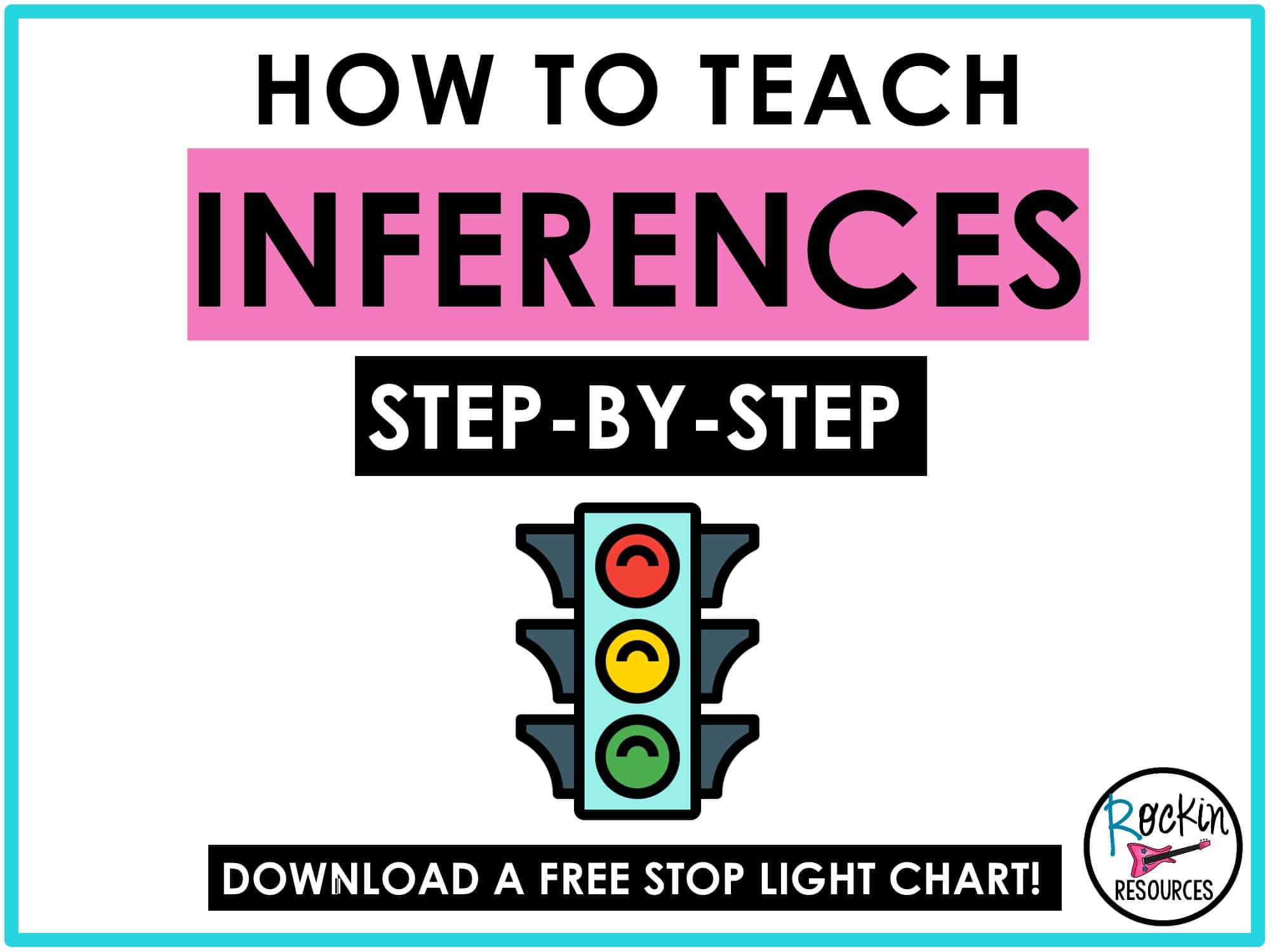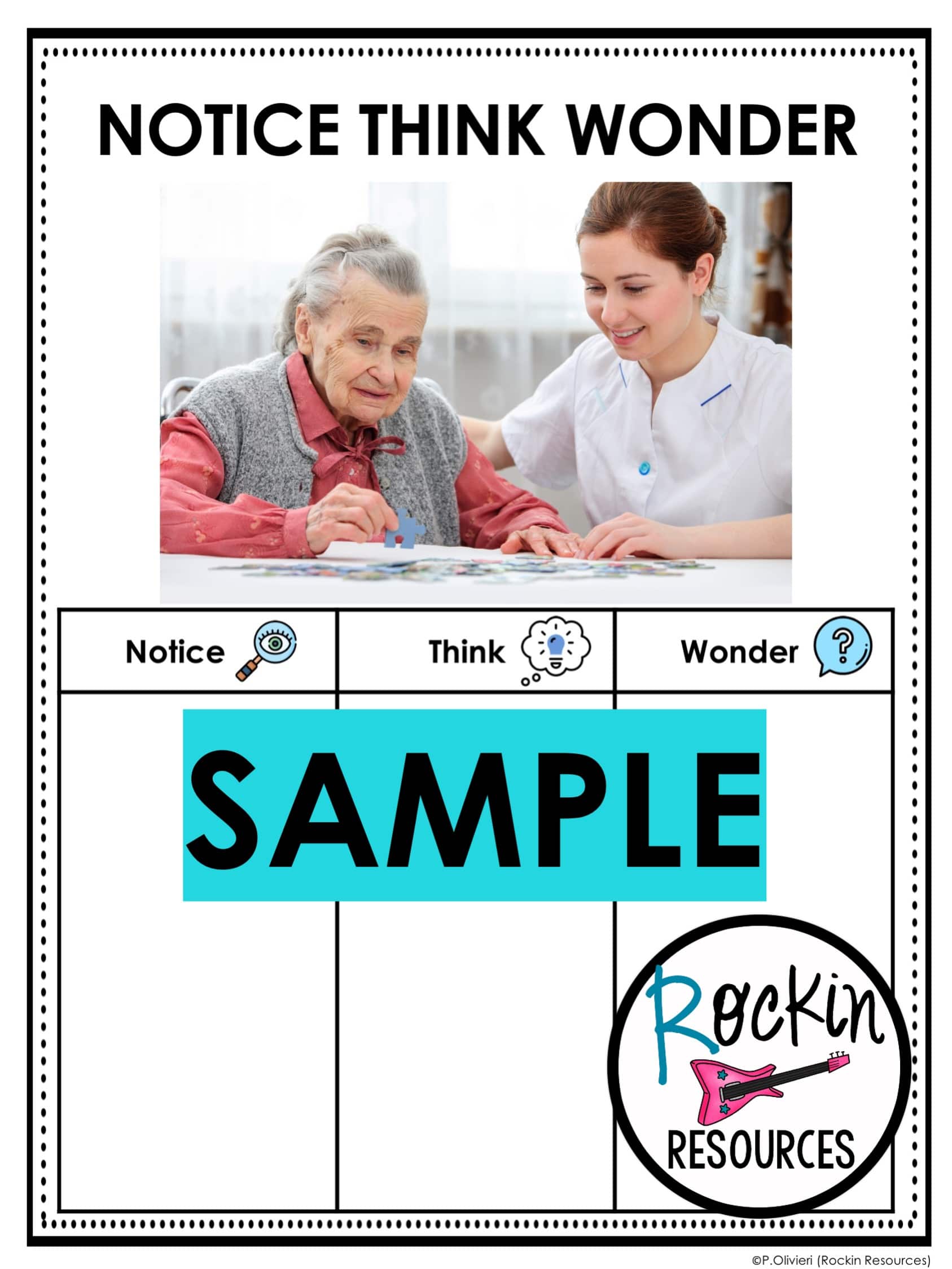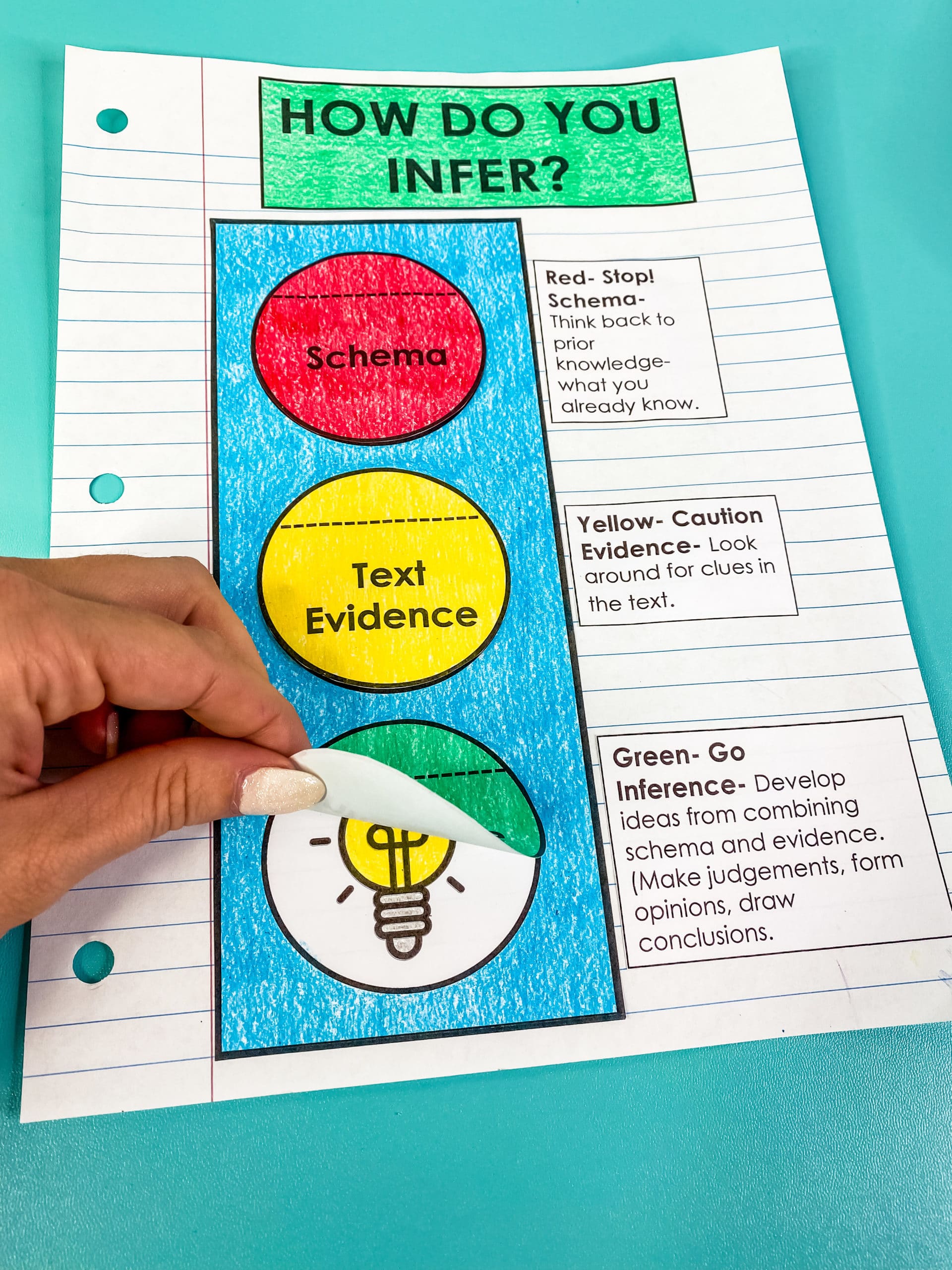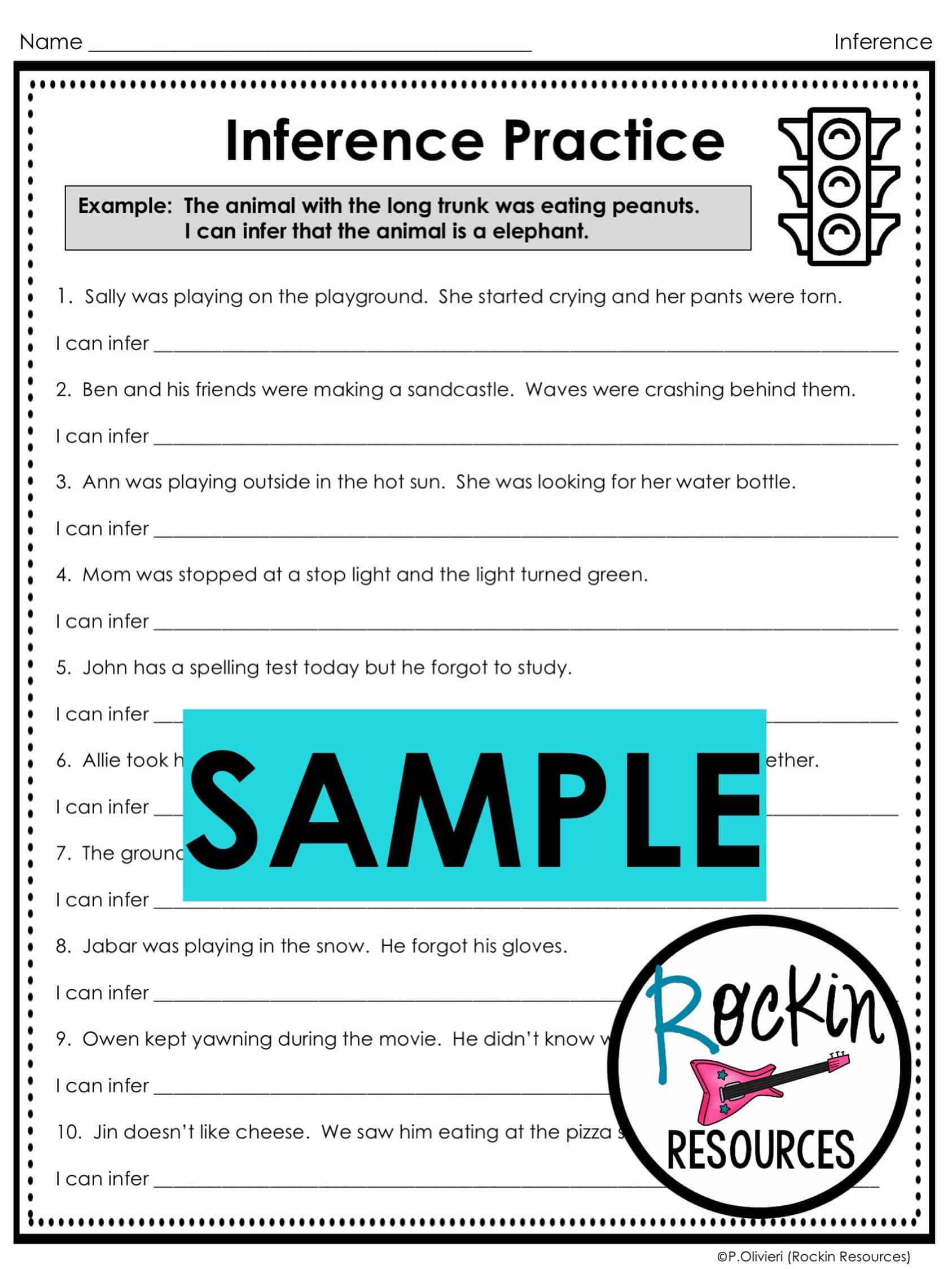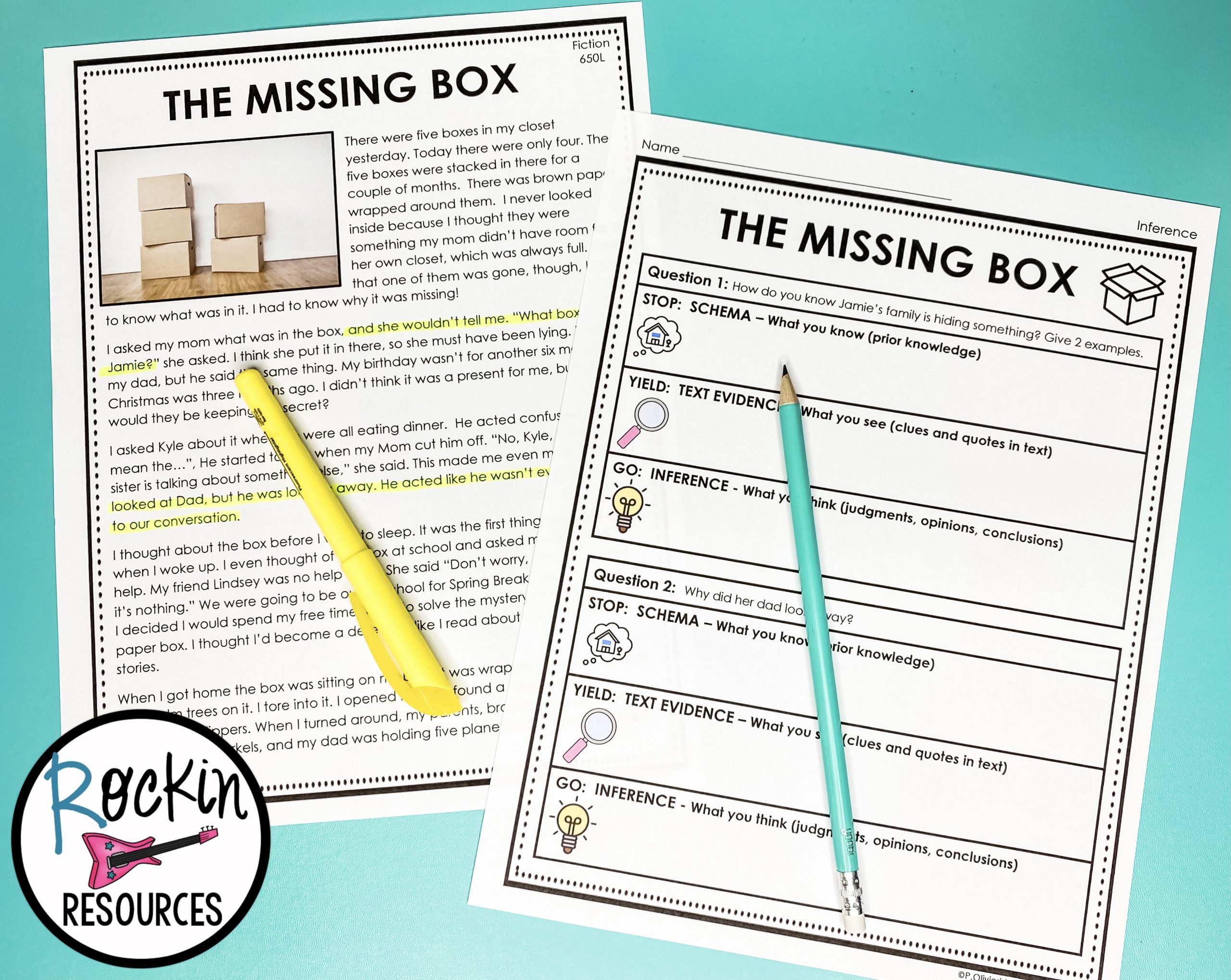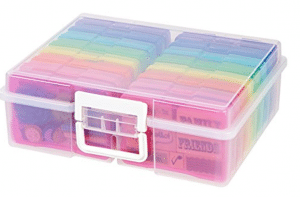With the Common Core Standards in place, students are being asked more and more to use critical thinking skills to analyze literary and informational text. Inference is a prime example of a critical thinking skill used in classrooms today. Students are asked to read text and analyze it by thinking deeper—way beyond the visual text.
This post will provide STEP-BY-STEP ideas to help your students learn how to infer. First, understand that it is not a one-day lesson. I’m going to show you how I use 2 weeks of instructional time to teach your little cherubs how to think deeper with inference strategies. Read on to learn HOW TO TEACH INFERENCE!
Day 1- Play a Game
Start by playing a game. I like the Headbandz game or play a DIY guessing game similar to Headbanz. Headbandz is designed to have students guess the animal, object, or place that is on the card on their head. A DIY version can be to tape a picture or word on the back of a student or have a student cover his/her eyes and secretly show others a card or word. The student then tries to guess what is on that card by asking yes or no questions like: Am I an animal? Do I live in the water? Do I have legs? Explain that you will be teaching them how to infer and that inferring involves finding answers that you can not see.
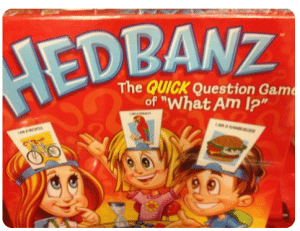
Click to buy on Amazon- Affiliated link
Day 2- Photo Inferences
Practice using photographs. Show photographs that can prompt thinking and questioning. I like to use the Notice, Think, Wonder method for analyzing photographs. As a whole group, have students in groups discuss each step and then share with the class. It is amazing to hear the different observations and thinking! Explain that this is a visual way of inferring and that tomorrow they will learn how to infer within a text.
Notice- What do you notice? What do you see?
Think- What do you think is happening? Why?
Wonder- What do you wonder about the image or people in it?
After you practice a few of these with your students, place photographs in a center or give them independent practice with Notice, Think, Wonder.
Day 3- What is an Inference?
Tell students that the Headbandz game and Photo Inferences are activities to introduce a more complex way of inferring- Using Text Inferences. Explain that an inference is:
- An educated guess
- “Reading between the lines”
- Reading facts and evidence to reach a logical conclusion or opinion
What is the text trying to tell you without coming right out and writing it word for word? Use the following sentence starters to help you infer!
- The author wants me to think…
- I’m guessing…because…
- Do I need to change my thinking?
Then hand out printed notes of the anchor chart, have students write their own notes, or get creative with interactive reading notebooks like:
Teacher Notes to help with explaining Inferences:
Making inferences while reading is a strategy that will help you understand the text at a deeper level. With the stop light, tell students that a yellow light comes before the red light. Many times they will need to do this step first (finding evidence in the text.)
It is good practice to start with predicting because it is more concrete. Predicting is when you make an “educated” guess using background knowledge (schema) and clues from the story that usually can be explicitly confirmed with further reading. For example: What will happen in the next chapter? or What will the character do next?
Making inferences is similar to predictions using schema and clues, but it isn’t found anywhere in the story. They are ideas formed around an implicit analysis (what the author did not communicate explicitly). This may be character’s feelings, character trait changes, reasons for their actions, etc. Look for the words or phrases in the text that show nuances or express a positive or negative tone. Draw a conclusion or form an opinion from those supporting details in the reading passage.
Day 4: How Do You Infer?
Teach with a “How do you infer?” anchor chart similar to my stop light method:
Ask students to take notes again. Taking notes is important for future reading lessons or activities. Students can look back in their notebooks as a reference.
Give students an example of the stop light inference method in a text.
The thunder boomed! My dog hid under the bed and was shaking like a leaf.
Red Light: “I know that thunder is loud.”
Yellow Light: “I know that loud noises can be scary. The text says the dog was shaking and hiding under the bed.”
GREEN LIGHT: “I can infer that the dog is scared.”
Day 5- Mentor Text
Share and brainstorm sentence starters to help with inferring. (See examples above and below.) Then practice in a whole group setting using a Mentor Text. As students answer questions, show them how to highlight their evidence in the text. (If it is a picture book, use Post Its to show proof.) Then show students how to fill out a stop light chart.
Show students ways of inferring using mentor text. Follow the stop light steps to inferring.
Althought most authors include some kind of inference in their stories, some mentor text are:
Thunder cake by Patricia Polacco
The Wretched Stone by Chris VanAllsburg
The Royal Bee by Frances Park and Ginger Park
Day 6- Small Group Practice
Go over ways to start an inference. Start by working on simple inference sentence starters like the following.
- The author wants me to think…
- I’m guessing… because…
- I need to change my thinking because…
- I put the following pieces together with prior knowledge and textual clues.
- Thinking about my own experiences…
- I infer…
- Thinking about how a character handles conflict and about their actions…
- Using clues from the text…
- Thinking about what a character says, how a character feels or changes…
- Perhaps…
- Maybe…
- This could mean…
- It could be that…
- I think…
When your students practice inferring, go over the answers as a whole group. This is important so students can hear how other students think.
Day 7- Small Group Task Cards
Task cards are a great way to have students practice and bounce ideas off each other. Place Inference task cards in a center or in groups. Start with multiple choice and lead into open-ended questions. Have students work in pairs or groups and share their answers. Allow them to talk through the process.
Day 8- Independent Practice
Encourage students to highlight their evidence and fill out all parts of the stop light chart. Although this is independent practice, it is still important to review the answers with the class so everyone can hear each other’s thinking. Learn how to highlight and provide text evidence HERE.
Day 9- Independent Practice and Review
Now that students had whole group, small group, and independent practice, the next independent practice works well for homework or first work. I like to provide differentiated passages or have students use the book they are using for independent reading. Students can use their notebooks at home to guide them! For higher-level differentiation, you can provide a blank chart similar to the ones below and have students create their own questions and inferences. SCROLL DOWN TO DOWNLOAD THIS CHART.
Review the anchor charts, stop light chart, and activities the day before assessment. This can be done by reviewing their notes and discussing the inference activities they did (Headbandz, Photo Analysis, Mentor Text, Inferring Text with stop light chart)
Day 10- Assessment
Now it is time to assess their learning! With 9 days of instruction, practice, and review, students should be ready to show what they know!
I hope these ideas will help you with a step-by-step approach to teaching inferences.
The following resource has all of these samples and more. If you are interested in a no-prep inference unit, click below to learn more.
Are you looking for a bundle of reading units? This bundle includes Inference, Text Evidence, Theme, Mythology, and Cause and Effect! Click below to learn more.
Just want the free charts? No problem! Here you go!
I love these colorful photo keepers for task cards!

